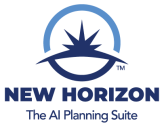
Building a business case for supply chain planning (SCP) software can seem like a tall order.
Supply chain leaders need a proactive process for getting executive buy-in.
After all, while the impetus for change often comes from the ones who are up to their eyeballs in operations, projects will fizzle out if the executive team isn’t also on board.
This article will give you guidelines for putting together a compelling business case and winning approval for investing in SCP software, especially in midsized organizations.
Your process doesn’t have to be complicated. It’s a bit of upfront work, but being prepared is better than having your project derailed at the 11th hour because of mismatched priorities.
Get Executives On Board for Supply Chain Planning Software
Understand that getting leadership buy-in may be harder for supply chain planning projects than for execution (SCE) projects. That’s because SCP software, while having greater potential benefits, is sometimes seen as an option rather than a necessity of doing business.
But that’s not the only reason getting approval may be trickier these days than it might have been in the past. According to Gartner, digitalization and AI are no longer viewed as separate projects. Instead, they’re part and parcel of everything you do.
That means you can expect more scrutiny from executives to be sure your plans align with their most critical business priorities. AI adds a layer of complexity that didn’t exist before. Getting a handle on how your SCP implementation will affect financial metrics like ROI, breakeven, and NPV (net present value) are necessary, but not sufficient. You also need to anticipate the implementation’s impact on your people and the long-term health of your organization.
Here are the steps to take.
Understand Executive Priorities
Start by ensuring that your business case considers these two essentials:
Strategic priorities
Understand the company’s overarching corporate and supply chain objectives and know how your SCP project fits in. Ensure that your SCP planning solution aligns with the company’s overall business objectives and supply chain vision. Don’t forget about market trends and customer behavior shifts where agility could provide a competitive advantage. Set clear goals and key performance indicators. Know how your project will impact the bottom line, support key initiatives, and increase profitability. Keep in mind that projects that are tied to quick growth are more likely to be approved quickly.
Organizational constraints
Know your budget and how your SCP project may be competing with other projects. Do an internal IT audit to understand the current technological landscape and integration requirements. Identify data availability, quality, and gaps. Also, assess how your project may overlap with other ongoing projects. If your organization is coming at inventory control from several different directions, for example, have a plan for how you will measure those various impacts without overstating them.
Build Organizational Support
Start building support early. You’ll want to approach these three groups.
Identify potential champions and coaches
Involve stakeholders from across the organization, including business units, functions, and sites. Identify business process owners who will coordinate planning across the entire value chain. Find sponsors and coaches who will champion you and help you build consensus among people with different priorities or objectives.
Engage with other key stakeholders
Determine what other areas of operations will be affected. Start getting them involved early in the decision-making process. Ensure that everyone has a sense of ownership so they’ll be invested enough to make sure that the right resources will be allocated to ensure project success.
Identify potential naysayers
Anticipate and address potential resistance by clearly defining expected roles and responsibilities. Emphasize how new SCP planning software will solve their current top pain points. Involve skeptics early in explaining and showing proof of concept. Outline necessary training and effective communication strategies.
Create a Strong, Clear Communication Plan
Communicate continuously with executives, stakeholders, and users. Share information across locations and departments. Lay the groundwork for cross-functional teams to enhance collaboration and communication and break down organizational silos. Understand that keeping C-level execs engaged is an ongoing process. Don’t just email, meet in person.
Most importantly, tell compelling stories. Data is necessary, but narratives on how stakeholders can expect their lives to change are also key. Tap into their day-to-day experiences.
- How will end-to-end data visibility make decision making faster and easier?
- What’s the impact of missed deliveries, upset customers, and lost business?
- What kinds of questions will they be able to get answers to that they couldn’t before?
- What risks will they be better prepared to avoid (excess & obsolete inventory or the costs of bad downstream data, for example)?
Assess Your Current Situation
Next, you’ll want to compare your organization’s current performance with customer needs, competitive capabilities, and industry benchmarks.
Look at factors like forecast accuracy, stockouts, replenishment, customer pain points and employee pain points.
What manual processes still exist in inventory management, order processing, and demand forecasting?
What’s the state of your current data collection storage and analysis? Where are there opportunities to improve data accuracy, accessibility, and real-time availability?
Evaluate the integrations between different systems and processes. What silos could you eliminate?
See where AI-native SCP planning could improve key performance metrics, efficiency, and productivity. Which cost centers could be transformed into value centers through digitalization — for example, are there opportunities to optimize stock using advanced analytics and forecasting tools?
Are there tools in your current tech stack that are outdated or lacking capabilities that are essential to meet your strategic goals? Where are the gaps?
Evaluate your current end-to-end supply chain visibility. Where could improved visibility mitigate risks?
How could AI-powered SCP support sustainability goals by improving resource utilization and reducing waste?
What opportunities exist to improve collaboration with suppliers, customers, and other partners?
Once you’ve answered these questions, you’re ready to start planning.
Put Together a High-Level Project Plan with Costs
Develop an implementation roadmap that outlines the steps you’ll take. Prioritize early wins, measure success, and continuously improve the implementation process.
Key milestones and timeline
Kickoff to go-live — Your expected project timeline, start to finish.
Payback period — The estimated time required to breakeven from your initial investment.
Total cost of ownership
Licensing — Look for a manageable initial investment plus cost-effective ongoing renewals.
Implementation — Consider not just time but resources. Shorter implementations can be a source of significant savings.
Staffing — Determine what will be needed to administer and support your software on an ongoing basis. The more automated and the less resource intensive your solution is, the more you’ll save in the long run.
Training — Steep learning curves can derail your SCP software investment. Look for software with a minimal learning curve, ideally similar to a tool they’re already familiar with, e.g., Excel or Sheets.
Assess the Business Case for Implementing a New System
Now you’re ready for the finishing touches.
1. Estimate the potential performance improvements
Consider operational efficiencies like inventory optimization, reduced waste, fewer stockouts, and cost savings as a result of improved forecast accuracy, inventory management, procurement, and logistics processes. Include benefits from greater end-to-end visibility, allowing for better control and decision-making.
2. Consider non-quantifiable benefits as well.
Supply chain planning software typically enhances efficiencies by automating routine tasks and eliminating bottlenecks. Companies may also realize increased production output as a result of better collaboration and coordination with shipping companies, vendors, and suppliers. Consider the effect of increased customer satisfaction, as well as the benefits of staying agile despite disruptions.
3. Measure the ROI
A simple ROI calculation divides the net benefits (benefits minus costs) by the costs, multiplying by 100 to get a percentage. You may also use the Net Present Value (NPV) or Internal Rate of Return (IRR) or some combination. Look at inventory optimization, order fulfillment cycle time, customer fill rates, cost savings (for example, operational costs, procurement and logistics), and revenue lifts.
4. Address potential concerns and risks
Look at the potential risks of your supply chain software implementation and have a plan to minimize them. You may consider factors like resistance to change, estimated system downtime, complications with data cleansing or integrations, scalability issues, or the risks of a long implementation. Don’t forget to include the risks of doing nothing.
Summarize, Socialize, and Present the Business Case
Remember your audiences and speak directly to them, using their own language. In other words, you may want to go into detail on day-in, day-out activities when speaking to purchasing or demand planning managers, but focus on high-level, strategic, and bottom-line impact for C-level execs.
Remember that none of the communications they’re hearing at this point should be new. Stakeholders and execs should already be generally familiar with what you’re proposing because you’ve kept them in the loop the whole time.
It’s just as important to win hearts as it is to win minds. Tell compelling stories and stress the short-term wins as well as the long-term vision.
Get Executive Buy-In for SCP Software the Right Way
Supply chain is often front and center in any effort to optimize costs. Advanced analytics are a major enabler — and supply chain planning software can deliver significant improvements.
Getting executive sign-off on your project can involve a significant investment in analysis, meetings, presentations, and more, but it’s essential to winning budget and avoiding unpleasant last-minute surprises.
To Learn More
New Horizon solutions are quick to implement and have low licensing, implementation, and ongoing training and support costs.
Interested in learning more? Talk to one of our experts.


